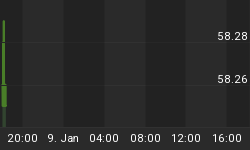
As we're approaching the last month of the year, it's time to check for the market's historical performance in December (see also S&P 500: Best and Worst Performing Month since 1940), as well as the market's performance during the 1st week of December.
Table I below shows the date of the last session of December ('End-of-Month Day'), the S&P 500′s historical (since 1930) performance in December ('Monthly Returns'), the respective number of sessions, the maximum gain and the maximum loss (drawdown) during the month (assumed one went long on the last session of November), and the respective performance in November ('Prev. Month') and the then following January ('Next Month').

(* no close below November's end-of-month close during December)

It is interesting to note that
- ... the S&P 500 showed a positive performance in December in 68 out of the last 80 years (or in almost 3 out of every 4 years) ;
- ... the S&P 500 showed a positive performance in December in 19 out of the most recent 23 years (or in more than 4 out of every 5 years) ;
- ... the S&P 500 showed a positive median monthly return of 1.55% and therewith almost doubles the at-any-time monthly median return of 0.88% ;
- ... one standard deviation of December's monthly returns (3.71%) in are significantly lower than the at-any-time deviation of monthly returns of 5.53% (consistency).
Although the ISO standard does not define any association of weeks to months, December 2010 (December 1, 2010 is a Thursday) will start with week #1. The first week of the month is the first week that contains a Thursday. This is based on the ICU definition of week of month, and correlates to the ISO8601 week of year definition (week 01 of the year is the week with the year's first Thursday in it). A day in the week before the week with the first Thursday will be week #0.
Table II below shows the date of the last session of December's week #1 ('End-of-Week Day'), the S&P 500′s historical (since 1930) performance for week #1 in December ('Weekly Returns'), the respective number of sessions during the week (between 2 - the first day of the month is a Thursday - and 5 - first day of December is a Friday, Saturday or Sunday -), the maximum gain and the maximum loss (drawdown) during the week (assumed one went long on the last session of the previous week), and the respective performance during the previous ('Prev. Week') and the then following week ('Next Week').

(* no close below the previous end-of-week close during December's week #1)
It is interesting to note that during week #1 in December
- ... the S&P 500 showed a positive performance in 16 out of the last 20 years (or in 4 out of every 5 occurrences) ;
- ... did not post a single close below the previous end-of-week close in 9 out of the last 20 years (or in almost 2 out of every 4 occurrences) ;
- ... the S&P 500 showed a positive median weekly return of 0.53% and therewith almost doubles the at-any-time weekly median return of 0.28%.
Conclusions:
From a statistical and historical point of view, on December 1 we're entering into one of the favorable intermediate-term time frames for the markets due to the positive turn-of-the-month effect (especially the first three sessions of a month), and positive seasonalities like the week #1 in December and December itself. Unfortunately positive seasonalities might collide with any potential force majeure and /or intensification of latent crisis (debt crisis in the euro zone or the crisis bewteen North and South Korea).
Enjoy your weekend, and successful trading,
















